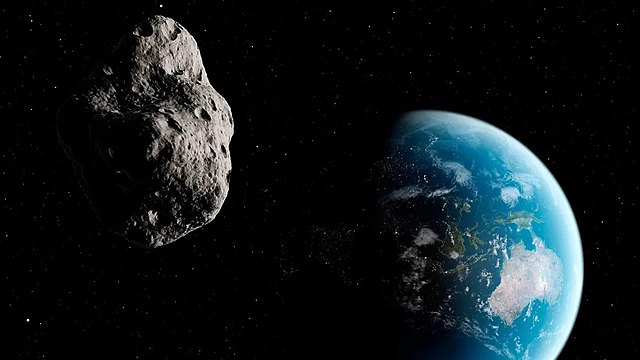Around 4.5 billion years ago, a dwarf planet and a huge asteroid may have collided, launching strange hexagonal diamonds into space.
According to a recent study, lonsdaleite, a rare kind of meteorite that may have originated from the mantle of a dwarf planet, contains hexagonal diamonds. Lonsdaleite is a unique structural type of carbon that shares similarities with graphite, charcoal, and diamond.

The carbon atoms in lonsdaleite are organized in hexagons, as opposed to the cubic arrangement found in diamonds.
In a statement, Dougal McCulloch, a microscopist at RMIT University in Australia, said, “This study proves categorically that lonsdaleite exists in nature. We have also discovered the largest lonsdaleite crystals known to date that are up to a micron in size —much, much thinner than a human hair.”
Lonsdaleite, which bears the name of the British crystallographer Dame Kathleen Lonsdale, was initially identified in the Canyon Diablo meteorite in 1967.
According to the latest research, lonsdaleite is tougher than conventional diamonds because of its hexagonal shape, which could lead to the development of new manufacturing processes for materials that are extremely hard.
Scientists looked at the unusual class of space rocks known as ureilite meteorites, which contain lonsdaleite, thought to contain material from dwarf planets’ mantles.

Scientists Examined Slices of Meteorites for Lonsdaleite
To identify lonsdaleite and determine its origins, scientists microscopically examined slices of these meteorites. They also looked at the regularly-formed diamonds that were embedded in the rock.
McCulloch said, “There’s strong evidence that there’s a newly discovered formation process for the lonsdaleite and regular diamond, which is like a supercritical chemical vapor deposition process that has taken place in these space rocks, probably in the dwarf planet shortly after a catastrophic collision.”
“Chemical vapor deposition,” he added, “is one of the ways that people make diamonds in the lab, essentially by growing them in a specialized chamber.”
The researchers believe that the supercritical liquid that gave rise to the lonsdaleite in the meteorites was created at high temperatures and pressures. Because of this harsh environment, the lonsdaleite was able to maintain its graphite-like shape and texture. Lonsdaleite was eventually substantially replaced by diamond when the environment cooled, and the pressure decreased.
The group believes that the industry might replicate the procedure to create the rare mineral.
In the same statement, team leader and geologist Andy Tomkins from Monash University in Australia said that “nature has thus provided us with a process to try and replicate in industry, [and] we think that lonsdaleite could be used to make tiny, ultra-hard machine parts if we can develop an industrial process that promotes the replacement of pre-shaped graphite parts by lonsdaleite.”





